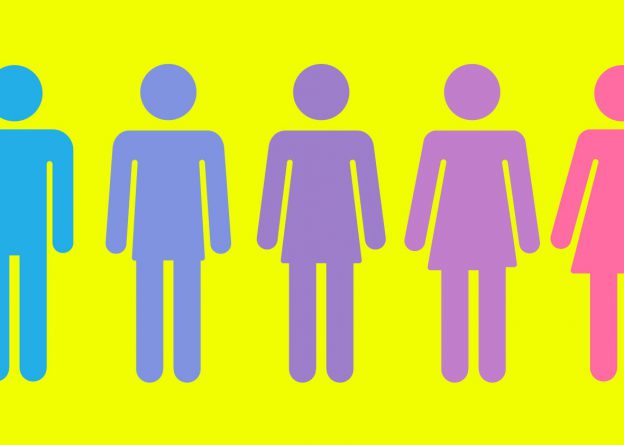Language has, and always will, remain the means in which we express and construct our sexual identity. Heterosexual, gay, lesbian, bisexual, he, she, man, woman, girl, boy; these are just some of the terms that we use on a daily or regular basis when one asks to describe ourselves. It is simply inherent for us to use these gendered personal nouns, pronouns and terms to describe our gender or sexual identities.
Ever since its emergence, language and sexuality has long been established as an area of research that is important in discourse analysis and sociolinguistics. Queer linguistics refers to the ways, methods and strategies that implies various notions of sexualities (Leap, 2015) and provides an avenue for the analysis of language data that are formed based on the insights and research of Queer Theory, which refers to the understanding of the relationship between gender and sexuality. Much of the critical analyses of Queer Linguistics revolve around heteronormativity, in which it defined it as a system that ‘prescribes, enjoins, rewards and naturalizes a particular kind of heterosexuality–monogamous, reproductive, and based on conventionally complementary gender roles–as the norm on which social arrangements should be based.’ (Cameron, 2005)
The impact that heteronormativity has had on queer linguistics has been largely significant in the study of language and gender, so much so that it has since introduced sexuality into the big picture when it comes to the research of language and gender. Queer theory has largely been motivated simply by the idea that gender is performative in the current world we live in as gender identities are no longer determined biologically, in terms of the sex of their bodies that they were born with. It no longer fixates on the idea that gender is binary.
Before we go on to talk about queer linguistics and how it has changed over the years, let us first look at how the meaning of the adjective queer itself has changed over the decades. Once considered as a highly contemptuous synonym for homosexual, it is now typically used as a positive term to describe all non-heterosexual identities. The term heterosexual itself was only created in the second half on the 19th century and was used as a term to diagnose an illness or disease. Foucault (1978) stated that the identity concepts of heterosexuality and homosexuality are not only a ‘predominantly Western phenomenon (and therefore culture-specific) but are also relatively recent from an historical point of view.’ The perceptions of heterosexuality and homosexuality were vastly different as homosexuality was seen as a deviance.
In recent years, there has been more liminal focus on marginalized and ‘queer’ gender identities and the relationship between factors such as gender, sexual identities and heteronormativity. This included more than just lesbians and gays, but other queer identities such as bisexuals, transgenders amongst others that were found to be marginalised and improperly represented in research and studies on queer theory and queer linguistics. On top of that, recent studies on queer linguistics have also placed much emphasis on cultural diversity and sexual minority groups such as the hijra in India and the yan daudu of Nigeria, that transcends beyond the typical modern western categories that constitutes gay men or lesbians, or any other traditionally sexually marginalized groups. By highlighting and including these groups in queer studies and queer linguistics, as it widened the categories of sexuality related discourses, making queer linguistics more coherent and cohesive. As Livia and Hall (1997) have pointed out, gender as a reiterative performance has ‘access to a variety of scripts, not all of which may be intelligible to the culture at large.’ Queer linguistics allows for the discussion of relations that stem from a series of theories such as sexual ideologies, sexual or cultural practices and identities and examines ‘how nonnormative sexualities are negotiated when it was examined in regulatory structures.’ (Bucholtz and Hall, 2004) Some of the research studies that emerged from queer linguistics revolve around linguistic distinctiveness, in which researchers analyse linguistic features as markers of lesbian and gay identities.
However, back in the 1960s and 1970s, the research carried out at that time focussed heavily on lexicons and gay glossaries that existed at that point of time, some of which were Cory and LeRoy’s “A Lexicon of Homosexual Slang” published in 1963, “The Lavender Lexicon: Dictionary of Gay Words and Phrases” published in1964, and Rodgers’ “The Queens’ Vernacular” published in 1972. These works highlighted the varieties spoken by the white gay male population in the United States whereas Giallaombardo’s “Society of Women: A Study of a Woman’s Prison” that was published in 1966, presented the variety in which lesbians used which consisted of terms from other languages, apart from English such as the “Gay Girl’s Guide to the U.S. and the Western World” which was published as early as 1949, with sections that included French, German and Russian terms. (Livia, 1997) Why was there such a considerable disparity in the number of studies conducted on linguistic features of lesbians and gays, you wonder? Legman states that it could perhaps be due to the “tradition of gentlemanly restraint among lesbians” (Hayes, 1978) He then argues that if the lack of lesbian slang indexes a lesbian’s speech style as gentlemanly, the gay slang indicates that their speech style resembled that of women.
Following these publications of glossaries and collating these lexicons then came a time where numerous studies focuses on lesbian and gay discourse. Aptly coined ‘queerspeak’ or ‘lavender linguistics’, copious amounts of studies and research discuss the gay and lesbian discourse strategies, and examine the traits that are exclusive and specific to the speech of gay men or lesbians. The study of these features have remained key in the formation of their identity and researchers have shifted towards trying to understand the ‘meaning and function of linguistic practices–what people do with language–in light of those people’s beliefs about language’ (Milani, 2016) which simply means that looking beyond just the different lexicons or features, but studying why they use them and in what contexts.
In the beginning of the twenty-first century, researchers have called for the study of identity in language and sexuality research to be temporarily halted. Cameron and Kulick (2003a) supports the idea with the assertion that sexuality is not and cannot be reducible to simply sexual identity and desire should be taken into consideration and how power relations or dynamics come to play when expressing desire. Queer linguistics build on the ideas and theories from Queer Theory, and no longer reflects simply a ‘gay and lesbian’ approach to language. What queer linguists find problematic are the categories in which are established in queer linguistics which may exclude certain people as well as regulate certain criteria in which some queer people may not identify with.
In conclusion, queer linguistics remains an indispensable means to better understand the relationship between language, gender and sexuality. It sure has come a long way since the days where queer linguistics was just about linguistic features that marked the gay identity and gender and sexuality is seen as fluid, performative and in constant continuum, instead of it being fixed and rigid. Whatever it is, it will certainly stay and strive to continue bringing new insights to linguistic research and the study of language, gender and sexuality in a more sociolinguistic manner.
References:
Hayes, J. (1978) Language and language behaviour of lesbian women and gay men: A selected bibliography (Part 1). Journal of homosexuality 4:2 (Winter): 201-212.
Livia, A., Hall, K., (1997) Queerly phrased: Language, gender and sexuality. Oxford University Press: 3-58.
Milani, T. M., (2016) Language and sexuality. The Oxford handbook of language and sexuality. 403-419.
Bucholtz, M., Hall, K. (2004) Theorizing identity in language and sexuality research. Language in Society 33(4): 469-515.
Foucault, M. (1978) The history of sexuality. Vol. 1: An introduction. New York: Penguin.
Cameron, D., Kulick, D. (2003a) Language and Sexuality. Cambridge University Press: Cambridge.
Cameron, D. (2005) Language, gender and sexuality. Applied linguistics 26/4. Oxford University Press.
Motschenbacher, H. (2010) Language, gender and sexual identity: Poststructuralist perspectives. John Benjamins: Amsterdam.
Livia, A. (1997) “It’s a girl!” Bringing performativity back to linguistics. Queerly phrased: language, gender, and sexuality. Oxford p3-18.
Motschenbacher, H. (2013) Focusing on normativity in language and sexuality studies. Insights from conversation on objectohilia. Criticial discourse studies. pp49-70
Motschenbacher, H. Stegu, M. (2013) Queer linguistic approaches to discourse. Discourse and society. 24: 519-535.

